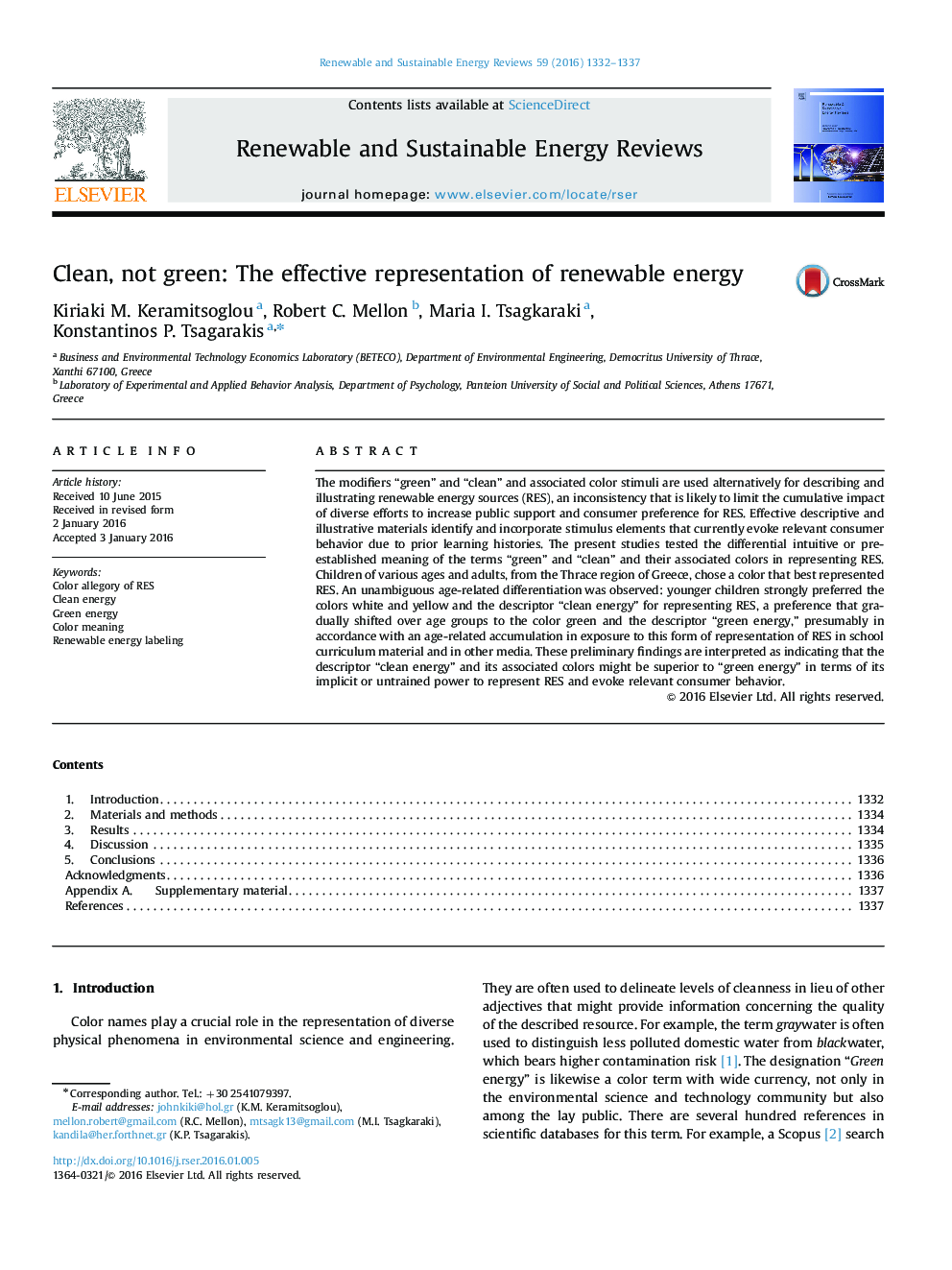| Article ID | Journal | Published Year | Pages | File Type |
|---|---|---|---|---|
| 8114536 | Renewable and Sustainable Energy Reviews | 2016 | 6 Pages |
Abstract
The modifiers “green” and “clean” and associated color stimuli are used alternatively for describing and illustrating renewable energy sources (RES), an inconsistency that is likely to limit the cumulative impact of diverse efforts to increase public support and consumer preference for RES. Effective descriptive and illustrative materials identify and incorporate stimulus elements that currently evoke relevant consumer behavior due to prior learning histories. The present studies tested the differential intuitive or pre-established meaning of the terms “green” and “clean” and their associated colors in representing RES. Children of various ages and adults, from the Thrace region of Greece, chose a color that best represented RES. An unambiguous age-related differentiation was observed: younger children strongly preferred the colors white and yellow and the descriptor “clean energy” for representing RES, a preference that gradually shifted over age groups to the color green and the descriptor “green energy,” presumably in accordance with an age-related accumulation in exposure to this form of representation of RES in school curriculum material and in other media. These preliminary findings are interpreted as indicating that the descriptor “clean energy” and its associated colors might be superior to “green energy” in terms of its implicit or untrained power to represent RES and evoke relevant consumer behavior.
Keywords
Related Topics
Physical Sciences and Engineering
Energy
Renewable Energy, Sustainability and the Environment
Authors
Kiriaki M. Keramitsoglou, Robert C. Mellon, Maria I. Tsagkaraki, Konstantinos P. Tsagarakis,
